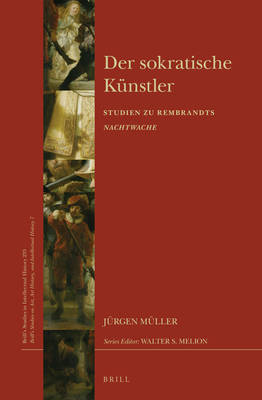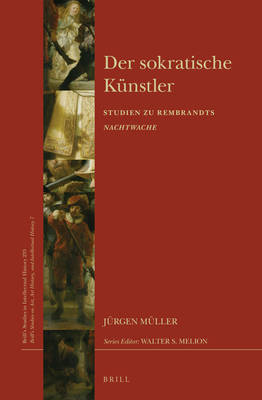
- Retrait gratuit dans votre magasin Club
- 7.000.000 titres dans notre catalogue
- Payer en toute sécurité
- Toujours un magasin près de chez vous
- Retrait gratuit dans votre magasin Club
- 7.000.0000 titres dans notre catalogue
- Payer en toute sécurité
- Toujours un magasin près de chez vous
Description
Im Fokus der Studie steht eine neue Deutung von Rembrandts Nachtwache aus dem Jahre 1642. Zentral ist dabei die Auseinandersetzung des Malers mit der klassizistischen Kunsttheorie von Franciscus Junius. Dessen Werk "De pictura veterum" war 1637 in lateinischer und 1641 in niederländischer Sprache erschienen. So lautet die These, dass Rembrandts Gruppenporträt auf eine Kritik italienisch-klassizistischer Imitatio-Konzepte zielt und zugleich Werke der Antike und der italienischen Hochrenaissance ironisiert. Der Leidener Maler orientiert sich an Raffaels Schule von Athen, um damit implizit die Frage angemessener und unangemessener Nachahmung zu stellen. Die Studie insgesamt will zeigen, wie differenziert Rembrandt mit Vorbildern umzugehen vermag. Steht auch die Nachtwache im Zentrum der Untersuchung, so werden auch andere Gemälde sowie Radierungen und Zeichnungen interpretiert und nach der ironischen Dimension von Rembrandts Kunst im Ganzen gefragt.
The focus of Müller's study is a new interpretation of Rembrandt's Night Watch from 1642, which highlights the painter's engagement with the classical art theory of Franciscus Junius. Junius's treatise, "De pictura veterum", was published in Latin in 1637 and in Dutch in 1641. Ultimately, Müller argues that Rembrandt's group portrait was designed to present a critique of the Italianate/classical concepts of Imitatio in addition to offering an ironic commentary on artworks of the Antique and High Renaissance periods. The Dutch artist takes Raphael's School of Athens as a reference point, thereby implicitly posing questions about appropriate and inappropriate forms of imitation. The study as a whole shows how complex and witty Rembrandt's approach to his models could be. Although the Night Watch occupies a central place in the inquiry, the author also engages with other paintings, etchings and drawings in order to sketch the contours of Rembrandt's ironic image making.
The focus of Müller's study is a new interpretation of Rembrandt's Night Watch from 1642, which highlights the painter's engagement with the classical art theory of Franciscus Junius. Junius's treatise, "De pictura veterum", was published in Latin in 1637 and in Dutch in 1641. Ultimately, Müller argues that Rembrandt's group portrait was designed to present a critique of the Italianate/classical concepts of Imitatio in addition to offering an ironic commentary on artworks of the Antique and High Renaissance periods. The Dutch artist takes Raphael's School of Athens as a reference point, thereby implicitly posing questions about appropriate and inappropriate forms of imitation. The study as a whole shows how complex and witty Rembrandt's approach to his models could be. Although the Night Watch occupies a central place in the inquiry, the author also engages with other paintings, etchings and drawings in order to sketch the contours of Rembrandt's ironic image making.
Spécifications
Parties prenantes
- Auteur(s) :
- Editeur:
Contenu
- Nombre de pages :
- 348
- Langue:
- Allemand
- Collection :
- Tome:
- n° 235
Caractéristiques
- EAN:
- 9789004285255
- Date de parution :
- 12-02-15
- Format:
- Livre relié
- Format numérique:
- Genaaid
- Dimensions :
- 163 mm x 239 mm
- Poids :
- 657 g

Les avis
Nous publions uniquement les avis qui respectent les conditions requises. Consultez nos conditions pour les avis.






